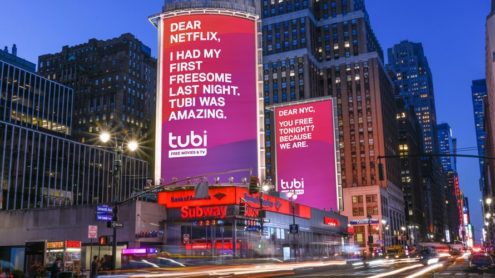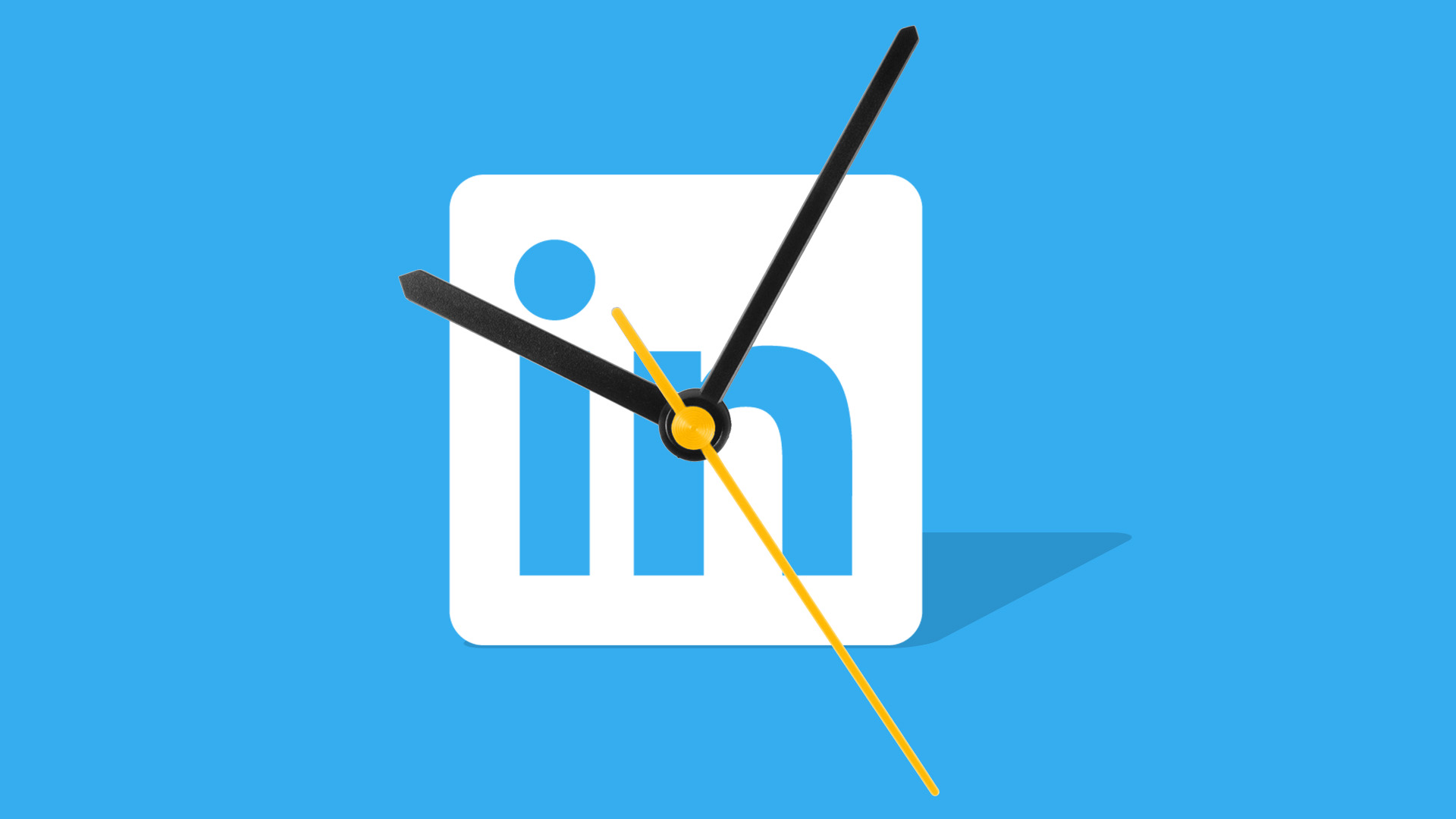10 Marketing Trends That Shaped 2021

You all deserve a big round of applause for getting through 2021. Go ahead, pat yourself on the back, we’ll wait.
Woof. We made it.
You all deserve a big round of applause for getting through 2021. Go ahead, pat yourself on the back, we’ll wait.

The marketing world (who are we kidding, the entire world) has been reeling since the early months of 2020. But us marketers, we’re agile by design, and as the media, privacy, and technology landscape shifted to pose new challenges, we shifted right along with it to create exciting opportunities for brands to better connect with their core audience.
But with how the world has evolved, it’s more important than ever that you ride the wave of the developments that have happened in the industry over 2021. If not, you’ll be caught in the undertow and pulled out to sea with the other brands who didn’t shift with the tides (we’re sorry Quibi–we really did like you in concept!)
Let’s take a look back at the trends that shaped 2021. As you read through these 10 (+1!) keep an eye towards how these trends may impact your future marketing campaigns in 2022.
Learn More: Social Media Video Ad Specs & Placements Guide
1. The Continued Dominance of Gen-Z
In 2021, Gen-Z continued its rise to the top of all the latest advertising trends. The mobile-minded and social-savvy generation has proven to have significant purchasing power — a whopping $143 billion.
This generation plays a big part in the push towards video-first apps, like TikTok or Instagram reels. If Gen-Z ruled the social media landscape this year, then so did video marketing. In 2021, 70% of young consumers reported watching social media videos — an increase from the 66% who reported watching videos in 2020.
In 2021 and beyond, Gen-Zers are expecting more from brands they support. In particular, they’re looking for:
- Authenticity
- Transparency
- A concrete set of values
2. The Emergence of Live Stream Shopping
Live streaming has taken off in 2021. The market is predicted to reach an overall worth of $70 billion by the end of 2021, with apps like Twitch bringing in tens of millions of daily visitors.
That’s where live stream shopping comes in. Live stream shopping takes the popular live streaming feature, which can be found on a variety of social media platforms, and combines it with the traditional shopping experience.
There are many reasons why live stream shopping has become popular:
Allows users to purchase products directly from the live stream: Shoppers can view items immediately as they become available.
Offers a more engaging experience than traditional e-commerce: This brings a sense of excitement and community as viewers come together to shop from the same live.
More engagement between the consumer and the seller: Viewers can ask questions about the product or request to see it from a new angle.
While it’s still an emerging trend, live stream shopping has caught the attention of thousands of e-commerce shoppers, and it’s not likely to go away any time soon.
3. The Rise of Social Audio Platforms
Alongside work-from-home and online classes, the pandemic brought with it a massive spike in screen time. One survey found a 50% to 70% increase in internet use during the pandemic, 50% of which was spent on social media.
After a year of excessive screen time, many people are looking for a break from their screens. This has led to the rise of audio content, most notably podcasts and audiobooks.
Social audio, or voice-based social media, has also been on the rise. These platforms rely primarily on audio for people to communicate, instead of visuals like other apps. Here are a few examples of prominent apps that use voice:
- ClubHouse: This app kicked off the trend in 2020 and now has over 10 million users, allowing people to communicate in audio-only chatrooms.
- Twitter Spaces: Any one of Twitter’s nearly 400 million users can tap into Twitter Spaces, an accessible platform where people can communicate through voice, or unlike ClubHouse, by reacting with emojis.
- Facebook Live Audio Rooms: On Facebook, certain public figures or groups can host live audio-only events, where up to 50 speakers can engage with their audience.
- Spotify Greenroom: These live audio rooms allow music makers to connect with their fans (and their friends) in sessions that can also be recorded to make podcast episodes.
- Discord: Loved by gamers and fan communities alike, Discord has always had interactive voice channels. They recently introduced a live audio feature to rival ClubHouse.
4. The Explosive Growth of A.I. and Machine Learning
In 2021, A.I.-based marketing tools gained significant momentum. Companies are implementing A.I. and machine learning marketing tools more than ever before.
From generating leads to data-driven insights, A.I. and machine learning are helping brands produce content that not only has an impact but also creates tangible results. This helps marketing teams create content faster and develop the right messages to target their ideal customer.
Here are some of the areas where A.I. and machine learning could give you a boost:
- Insights and analytics
- Market research
- Social media marketing
- Email marketing
- Content marketing
- Marketing campaigns
THE ONE MARKETING SOLUTION YOU NEED IN 2022: Learn what Creative Analytics is, and why it’s the next frontier of data-driven marketing.
5. The Return of Digital Out-of-Home Advertising
It may seem like traditional forms of advertising have lost their appeal over the years. While it’s true that traditional media isn’t as powerful as it used to be — especially when compared to the growth of digital marketing — some forms are making an unlikely comeback.
Out-of-home advertising (OOH), like billboards, posters, or other in-person media, is the only form of traditional advertising that’s actually on the rise right now. While it took a significant blow during the pandemic, the channel slowly began to return as the world reopened in 2021.
In fact, now that many consumers are living in an oversaturated digital world, out-of-home advertising can be even more effective. After being bombarded with ads on their phones, they might be more likely to pay attention to a physical ad that’s right in front of them. Whether they’re driving past a billboard or looking at an ad on a subway car, these forms of advertisements are unskippable.

6. The Power of Video Marketing
Video marketing took the center stage in 2021, and it’s not going to die off any time soon. It’s one of the most important marketing trends right now — and likely for the next decade.
The consumer statistics demonstrate the importance of investing in video marketing:
- By 2022, online videos will account for more than 82% of consumer online traffic — 15x higher than in 2017.
- Nearly three in four (72%) of customers say they would rather learn about a product or service via video.
- After watching a brand’s video, 84% of people say they were convinced to buy something. Another 79% say they were convinced to download something after watching a brand’s video.
- Viewers retain 95% of a message when it’s delivered through a video, as opposed to 10% by text.
Businesses have started catching on to this demand:
- A majority (86%) of businesses use video as a marketing tool — an increase from 63% over the past three years.
- Marketers who leverage video content grow their revenue 49% faster than those who don’t.
Video marketing on social media also isn’t limited to platforms like Youtube or TikTok. A single video can be repurposed to go on Instagram reels, a podcast episode, a live broadcast on Facebook, and more.
7. The Push Towards User-Generated Content
When you’re constantly uploading new content to all of your platforms — Facebook, Instagram, Linkedin, TikTok, and more — it can quickly get overwhelming. An effective strategy for leveraging high-value content and lightening the load of your marketing team is to turn to user-generated content.
In an era that actively seeks out more authentic, grounded, and trustworthy content, user-generated content (UGC) can make a powerful impact. When it comes to user-generated content, 90% of users trust it to guide their purchasing decisions.
By tapping into user-generated content, a brand can take advantage of the trend towards more personal and authentic content. These posts tend to feel less self-promotional and show an appreciation for your customers.
When a brand reposts a customer’s content, they don’t just receive a boost to their trustworthy reputation and increased user engagement. They also create loyal and invested customers who feel closer than ever to their favorite brands.
8. The Focus on Customer Experiences
In 2021, customers have sky-high expectations for the brands they choose to support. To stand out in this competitive environment, you need to highlight the customer experience above all. To earn a customer’s loyalty, you need to provide them with a convenient, unique, and engaging customer experience.
The stats speak for themselves: 86% of consumers are willing to pay more if they receive a top-notch customer experience.
If you’re looking to take your customer experience to the next level and elevate your customer loyalty, one avenue to look towards is A.I. and machine learning. New technologies are rapidly improving the customer experience — giving each customer a smarter, faster, and more efficient pathway towards a purchase.
Other technological efforts tap into technology like augmented or virtual reality. For example, a makeup store can allow buyers to “try” on products before purchasing them by showing digitally how it would look on their faces. Any way that you can leverage technology to create a revolutionary and entertaining customer experience can go a long way to gaining a foothold in today’s competitive field.
9. The Value of Conversational Marketing
There’s a prevailing undercurrent to some of the most dominant marketing trends in 2021. Brands that focus on creating personal, one-on-one experiences are succeeding with customers.
That’s where conversational marketing can give you a serious advantage.
Conversational marketing is the process of creating an individualized, immediate connection. The goal is to create an approachable tone that enhances the customer experience and helps guide them towards solutions in real-time. If done the right way, this can create high levels of customer satisfaction, and ultimately, life-long customer loyalty.
Implementing conversational marketing is about more than just adopting a conversational tone. Many companies are employing chatbots designed to engage with each customer one-on-one. While customers may hesitate to fill out a form or call a phone number, an immediate connection with a voice — even if it’s a bot — creates a direct connection that meets their needs right away.
When customers have a question, they expect an immediate response. And when they get one, they want to be greeted with a friendly, helpful voice that gives them the answers they need.
Companies have used the following as tools to create a more conversational marketing strategy:
- Chatbots
- Virtual sales assistants
- Personalized videos
- Personalized messages and emails
Once this strategy is in place, the results can be impressive. One company that implemented conversational marketing saw 10x more sales conversations, a 70% increase in qualified leads, and 64% more meetings booked.
10. The Importance of an Answers-Based Strategy
In our tech-focused world, people don’t have the same level of patience when it comes to Google searches. When they search for a question online, they expect the answer right away. In fact, half of all browser-based searches resulted in zero clicks. This means that when they searched for something on Google, these users didn’t end up clicking any links to find what they were looking for.
All of this means that instead of a traditional knowledge-based content strategy, brands may find more success with an answers-based content strategy. If you develop content that answers a question directly — without users even needing to click a link — you can land high-ranking search engine results pages (SERP) positions.
Many new Google search results featured snippets and knowledge maps, highlighting the most important answer to users’ questions outright on the search page. Brands focused on finance, health, and DIY are likely to have the most success with getting content placed in featured snippets.
Bonus Trend: Privacy Regulations Rocked the AdWorld
You read the press releases and saw the full page ads, so you likely have already been feeling the impact of privacy regulations in 2021. And we don’t mean to freak you out, but a lot is still set to happen as we make headway into the new year.
Not like you needed an extra thing to feel anxious about in 2022, right?! With Apples iOS14 and 15 updates that gave considerable autonomy to individual’s data–while also deprecating the levers advertisers have historically used to find their core consumers–not to mention the slow phase out of the third-party cookie on Google Chrome, this year has been marked by marketers making agile moves to counteract the loss of granularity into user data. Digital targeting became quite complicated in 2021, but keep an eye on 2022 for alternatives to emerge.
2021 Trends in Marketing You Shouldn’t Ignore
The year 2021 came with a lot of change, but the digital revolution hasn’t hit its peak — and is expected to continue climbing for years. As the world continues to evolve, marketing will too — and brands will have to keep adjusting their strategies to reach the right audience.
These top digital marketing trends are something you shouldn’t ignore. Identifying these trends and adapting your strategy to meet them is a necessity if you want to remain relevant in today’s highly competitive market.
Keeping an eye on these trends (and knowing what to do with them) will help your business not only survive 2022 but also thrive.
Want to know your audience better in 2022? Learn how Creative Analytics can give you a holistic view of your target audience.
Do More with Video
Learn how we can help you produce more quality videos affordably and at scale.


